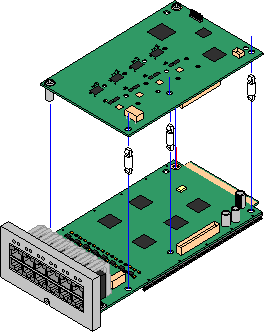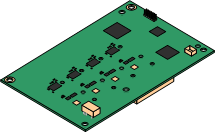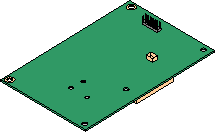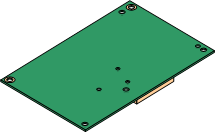|
Many IP500 base cards can be fitted with an IP500 trunk daughter cards to support the connection of trunks to the base card. Each daughter card is supplied with the stand off pillars required for installation and a label to identify the daughter cards presence on the front of the base card after installation. •IP500 Combination cards are pre-fitted with a trunk daughter card which cannot be removed or changed for another type of trunk daughter card. |
IP500 Analog Trunk Card V2
|
These cards allow the base card to support 4 analog loop-start trunks. •Maximum: 4 per control unit. •The analog phone ports do not include a ringing capacitor. Where this is a requirement, connection should be via a Master socket containing ringing capacitors. •If fitted to a base card with analog phone ports, during power failure phone port 8 is connected to analog trunk port 12. |
IP500 PRI-U Trunk Card
|
This type of card allows the base card to support PRI trunk connections. The cards are available in single and dual port variants. The card can be configured for E1 PRI, T1 robbed bit, T1 PRI or E1R2 PRI trunks. •Maximum: 4 PRI port cards. •The IP Office supports 8 unlicensed B-channels on each IP500 PRI-U port fitted. Additional B-channels, up to the capacity of ports installed and PRI mode selected require IP500 Universal PRI (Additional Channels) licenses added to the configuration. These additional channels consume the licenses based on which additional channels are configured as in-service from port 9 of slot 1 upwards. D-channels are not affected by licensing. •The PRI-U V2 cards are functionally the same as previous PRI cards, but only supported with IP Office R11.1 FP2 SP4 and higher. |
IP500 BRI Trunk Card
|
This card allows the base card to support up to 4 BRI trunk connections, each trunk providing 2B+D digital channels. The card is available in 2-port (4 channels) and 4-port (8 channels) variants. •Maximum: 4 per control unit. •S-Bus Connection: The card can be switched from To trunk mode to So mode. This mode requires additional terminating resistors and an ISDN crossover cable connection, see BRI Port (So). |




